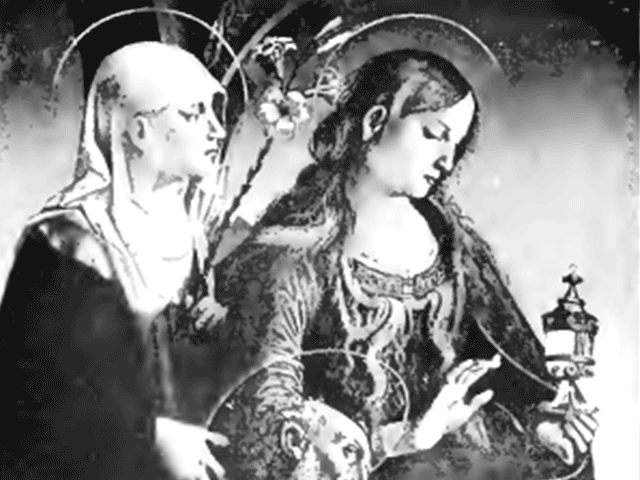<![CDATA[Rome, once known to be the home to some of the greatest artists in time such as Michelangelo, Caravaggio, Bernini and Raphael, is considered to be the mecca for those looking for Medieval era art. The fact that most of its artistic masterpieces have been well recorded makes it extremely rare for conservationists to uncover previously unknown frescos that date back to the 13th Century. However, that’s exactly what happened in the Gothic Hall of Santi Quattro Cornati Convent a few years ago, when frescos from about 1240 were discovered. After a long wait, those 13th century frescoes from Gothic Hall are finally being opened up for the public to see. The frescoes were made during the time of Cardinal Stephano Conti, the nephew of Pope Innocent III. What makes these frescoes so different is that they are full of profane imagery, something that was very uncommon for a religious institution in the 13th century. Instead of the usual angel wings and halos, these frescoes showcase cosmological diagrams of the southern constellations, agricultural sceneries, zodiac signs and seascapes. Mitra, an extremely popular roman figure; Solomon, a Jewish King; scenes from Cardinal Conti’s career; and the Vices and Virtues can also be seen in the fresco. According to certain documents that have been released by ARCUS, the frescos address the limited scope and nature of man when it comes to space and it also showcases the difficulty of the journey to space as well as the important role that the church has in governing and directing this journey. ARCUS also mentions that these frescoes were created as a model for next generation artists, including the famous Giotto, the artist who painted the Basilica of St. Francis of Assisi. These frescoes also played an important role in acting as the medium for cardinals to launch and reveal clear cut political messages. Another example of important political messages being depicted by cardinals by way of these frescoes can be found at the St. Sylverster Chapel. It showcases frescoes which depict the church (Pope Silvester I) holding power over the state (Emperor Constantine I). Art historian Andreina Drahi spent months along with a team of conservationists in uncovering these frescoes. They used scalpels to scrape away as many as seven different layers of plaster and paint, which are believed to have been applied in order to cleanse the convent from disease during the Black Death era. The world might have seen the fresco a lot earlier had excavations in 1989 taken place. However, since the actual excavations and restoration work began only 7 years later (once the Augustinian nuns living in the convent finally authorized the excavation work), it took a lot longer to restore the gorgeous 13th century fresco to its former glory and beauty. Unfortunately, the private nature of the convent means that all those wanting to have a look at these frescoes need to sign up for tours of the Gothic Hall. These tours take place only two times each month.]]>
13th Century Frescoes to Go on Display in Rome
